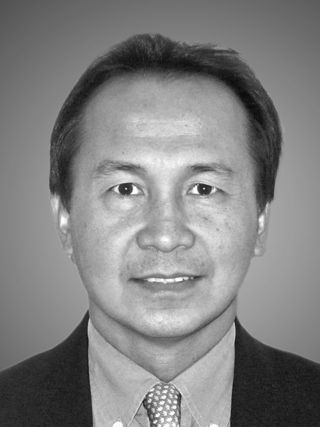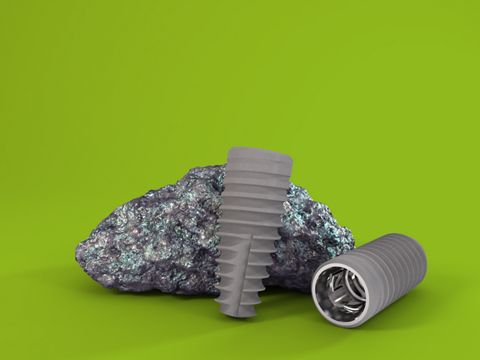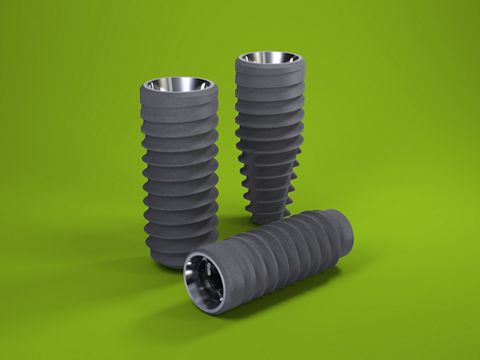Immediate replacement of primary maxillary right canine with a Roxolid® implant
A clinical case report by Mariano A. Polack and Joseph M. Arzadon, USA
A 39-year old female with non-remarkable medical history presented for extraction of the non-restorable primary maxil- lary right canine (53) and implant replacement (Figs. 1–3). Tooth in Regio 13 had been removed over 20 years ago because of high impaction.
Treatment planning
A delayed implant placement was planned to achieve a better control of the soft tissue contour and architecture. The alveolar ridge was narrow with buccal undercut, therefore, a small diameter implant design was treatment planned for the site. The potential for high forces, compromised bone quality and quantity, as well as esthetic demands required the use of a fast healing and strong implant with prosthetic flexibility to achieve the desired goal.
Surgical procedure
The initial phase involved removal of tooth in Regio 53 and placement of an interim removable partial denture to provisionalize the site (Fig. 4). The denture tooth in the prosthesis was shaped as an ovate pontic to contour the gingiva (Fig. 5) while awaiting implant placement (Fig. 6). Two weeks later, a flapless osteotomy with cooled saline irrigation was made in type 3 bone, following the socket contours to help pre- serve the original canine eminence. During the osteotomy, a buccal fenestration was created apical to the socket of the primary tooth. After completion of the osteotomy using a final drill of 2.8 mm, the fenestration was grafted with a xenograft material through the osteotomy. A Roxolid® implant (Straumann® Bone Level Implant NC 3.3 mm, SLActive® 12 mm) was placed with primary stability using a hand- piece at 35 Ncm (Figs. 7, 8). A conical healing abutment (Ø 3.6 mm/height 3.5 mm) was placed and no sutures were required (Figs. 9–11).
Prosthetic procedure
Immediately after implant placement a temporary abutment was connected to the implant, prepared (Fig. 12); and a methyl methacrylate shell was relined to fabricate a provisional screw-retained restoration. The crown was adjusted to avoid occlusal contact, polished and torqued to 15 Ncm. (Fig. 13). The screw access hole was sealed with a light- cured provisional composite resin. At the one-week postoperative appointment the patient showed excellent gingival health around the implant site (Fig. 14). Approximately four weeks after implant placement the provisional restoration was removed and a closed tray NC impression post was connected to the implant to make the final impression. Notes and photos of the desired shade, con- tours and surface texture were forwarded to the laboratory (Fig. 15). A CAD/CAM customized zirconia abutment was designed to provide adequate parallelism and emergence contours. The abutment was scanned to fabricate a zirconia coping which was veneered with compatible porcelain to obtain proper anatomy, esthetics and function (Figs. 16, 17). About six weeks after implant placement the restorations were tried in and all necessary adjust- ments were made. The abutment was torqued to 35 Ncm (Fig. 18), the access hole sealed with gutta-percha and a light-cured composite resin, and the zirconia crown was cemented with a self-etching resin cement (Figs. 19–21). Follow-up postoperative appointments were scheduled at one week and one month. The final restoration displayed excellent gingival health and natural esthetics (Figs. 22, 23).
Outcome
The advantages provided by Roxolid® and SLActive® allowed for the use of a small diameter implant in a compromised tooth space with high occlusal forces and high esthetic demands. From an esthetic standpoint, the small diameter elimi- nated the potential for additional procedures such as soft tissue grafting to bulk up the highly scalloped thin gingiva. The proven faster osseointegration granted the clinicians the confidence for immediate provisionalization even in compromised bone. This provided the patient with her desired fixed provisional restoration and helped maintain the peri-implant gingival contours. The esthetic benefits of this ap- proach are evidenced by the rapid and favorable soft-tissue response obtained in this case. From a functional perspective, the aforementioned factors reduced the number of procedures, thereby decreasing the cost for the clinicians and discomfort to the patient, while delivering the best possible immediate provisionalization. The insertion of the definitive restoration at six weeks in compromised bone allows the patient to resume normal function earlier, providing additional comfort and abbreviating total treatment time.
This clinical case report was first published in STARGET 3/2010.



